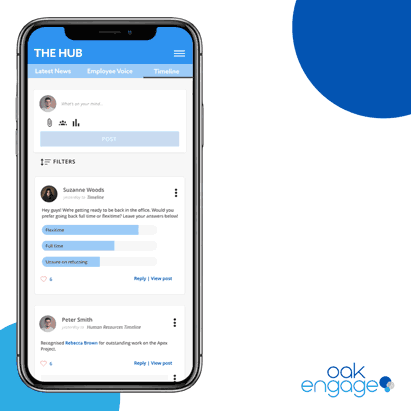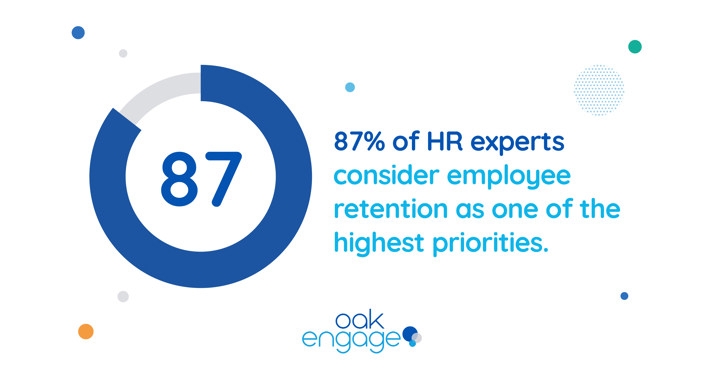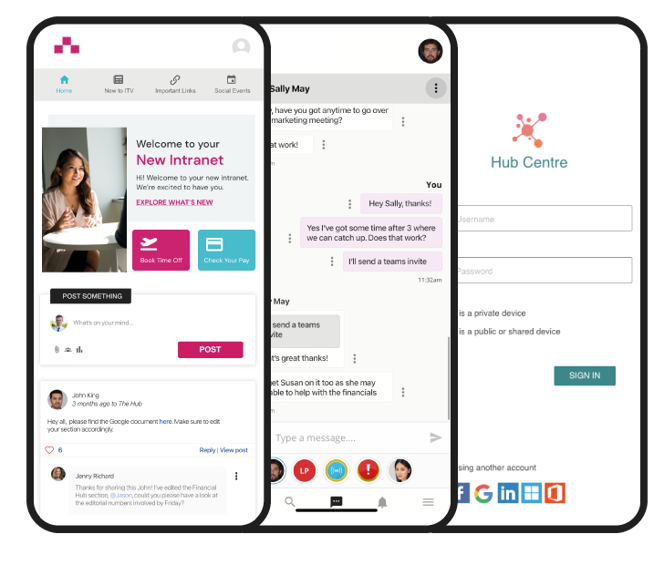Employee motivation is key to a company’s success.
It’s the level of commitment, drive and energy that employees bring to the role every day. Without it, companies experience reduced productivity, lower levels of output and it’s likely that the business will fall short of reaching important goals too.
However, there are companies that fail to understand the importance of employee motivation.
Research shows that many companies have disengaged employees with low motivation; only 13% of employees are engaged at work.
But don’t worry, we’ll explore everything from the definition of employee motivation, to how to improve it in your workplace.
Here’s what we’ll cover:
- What is Employee Motivation?
- Types of Employee Motivation
- Why Motivating your Employees is so Important
- How Employee Motivation can help your company
- Why do Employees become Unmotivated?
- How to improve employee motivation
- Employee Motivation Cheatsheet
What Is Employee Motivation?
First things first, let’s take a look at the definition:
Employee motivation is defined as the enthusiasm, energy level, commitment and amount of creativity that an employee brings to their organisation on a daily basis.
Ultimately, maintaining and improving motivation in the workplace can be a problem for many companies, as not every task will be interesting. Therefore businesses must find ways to keep their employees engaged.
Types of Employee Motivation
There are actually two types of motivation, intrinsic and extrinsic.
Haven't heard of these before?
Let’s take a look at the difference between them:
Intrinsic Motivation
Intrinsic motivation means that an individual is motivated from within.
Essentially, the employee has the desire to perform well in the workplace because the results are in line with their belief system.
An individual’s deep-rooted beliefs are usually the strongest motivational factors.
Research has shown that praise increases intrinsic motivation, and so does positive employee feedback.
With Oak, you can create and launch a poll or survey within minutes! It’s easy to make and enter and is perfect for boosting engagement and capturing the mood of your employees.

But it's important to remember that it should all be done in moderation. If you overdo any of these, there are high chances that your employees will lose motivation.
So if you are a manager, supervisor or in a leadership role, please be intentional with your feedback or praise. Make sure it is empowering and your employees understand your expectations.
Extrinsic Motivation
Extrinsic motivation means an individual’s motivation is stimulated by external factors - rewards and recognition.
Some people may never be motivated internally and only external motivation would work with them to get the tasks done.
Research says extrinsic rewards can sometimes promote the willingness of a person to learn new skills.
Rewards like bonuses or perks can motivate people or provide tangible feedback.
But you need to be careful with extrinsic rewards too! Too much of anything can be harmful and as a manager or a supervisor, you need to be clear to what extent you are going to motivate your employees to accomplish organisational goals.
Why Motivating Your Employees Is So Important
Imagine this…
You have an employee working at your organisation whose motivation is particularly low. They’re probably working at a slower pace than everyone else, avoiding tasks and possibly spending more time on their phone.
This isn't only wasting your company’s resources, but it could have a knock-on effect on other employees in your team. This could potentially hold back the entire company from producing work to its full potential.
On the other hand, a motivated employee is enthusiastic, and driven and wants the company to succeed.
They tend to finish tasks quickly, take action and want to do a good job.
Whether your company is at its best or you’re in the middle of improving internal comms, employee motivation is extremely important.
The moment your employee motivation drops, revenue and output could soon follow.
How Employee Motivation Can Help Your Company
Employee motivation is important for any company due to the benefits it brings to your organisation as a whole.
Some of these benefits can include:
Increased Employee Retention
Legal Jobs found that 87% of HR experts consider employee retention as one of the highest priorities in business.

And when employees are motivated, they want to stay with the company longer.
Higher Productivity Levels
It comes as no surprise that implementing employee motivation techniques encourages people to work productively and results in better revenue outcomes.
However, not many people know that a productive way of working also positively influences employee experience, as it promotes higher job satisfaction.
Great Reputation and Stronger Recruitment
Organisations that understand how to increase employee motivation, often deliver exceptional employee experiences and have a strong internal brand.
However, this doesn't happen overnight.
A strong brand is the result of strategies that rely on employee feedback. Businesses with established brand ambassadors, or in other words, happy and motivated employees both retain and attract top talent.
Improved Employee Efficiency
An employee’s efficiency level is not only based on their abilities or qualifications.
For a company to get the very best results, an employee needs to have a good balance between the ability to perform the task given and the willingness to want to perform the task.
This balance can lead to an increase in productivity and an improvement in efficiency.
Why Do Employees Become Unmotivated?
As a manager, you have a certain amount of responsibility for the motivation and well-being of your workforce.
It’s important to understand what really drives an individual's motivation, otherwise, employees will become unmotivated and less productive.
If you fear that your employees are lacking motivation, here are 5 common causes that could be the root of the issue:
1. Feeling Undervalued
If an employee feels that their efforts are not being recognised or appreciated, they’ll soon begin to lack energy and commitment in their role.
It’s important to celebrate successes and give your employees credit for their hard work. Try to make sure that achievements are rewarded, even if it’s just with a simple message.

In a remote working environment, these small but important recognitions can mean all the difference in how an employee is feeling in their role.
2. Lack of Career Development
In the majority of cases, money is just a small part of an employee’s motivation.
Most people want to have clear career objectives in place to feel that there is progression for them within their organisation.
Career visioning can be a useful process in setting clear, long-term goals for an employee so that they can proactively work towards projected outcomes.
3. Poor Leadership
Effective leadership is an essential factor in the motivation of your staff.
If strong leadership is lacking or is negatively affecting the outlook of the team certain employees may start to feel demoralised.
Leaders must have a flexible, inclusive approach to managing a team and be able to communicate clearly whilst instilling confidence and focus.
If a particular team or individual is lacking motivation in your business, it may be due to a lack of good management.
4. Unrealistic Workload
It’s important to keep a check on the expectations and demands that are being placed upon your employees.
If someone feels overwhelmed by a large, impossible workload, they can soon become stressed and lose motivation.
Equally, if an employee has a workload that’s too light or not varied enough, they might quickly lose interest quickly.
5. Conflict
Conflict in the workplace can be really damaging to an employee's morale and motivation at work.
Healthy debate is often productive, but it’s important to keep an eye out for any workplace intimidation or bullying.
Some employees may feel worried to come forward about issues relating to one of their colleagues, which is where an anonymous employee survey may help to reveal any problem areas.
How to Improve Employee Motivation
Now that we’ve covered why employee motivation is so important, let’s take a look at how you can improve motivation in your organisation.
Here are 10 ways to motivate your employees:
1. Recognise Your Employees
Recognition in the workplace is a vital contributor to employee engagement and happiness.
A Workplace Trends report found that recognition programmes have 27% higher profits on average. This shows that the bottom line is significantly impacted by consistent employee recognition strategies.

With all of this in mind, a business without effective recognition and reward programmes will have less motivated employees, ultimately making the business suffer.
Recommended Reading: Employee Recognition in the Workplace (Complete Guide)
2. Create a Welcoming Work Environment
Let’s face it. No one wants to sit in a gloomy office and desperately wait for home time every day.
If workplaces create a friendly company culture, employees will look forward to coming to work.
The saying ‘work hard, play hard’ is important here.
As motivation and mood go hand in hand, a poor mood can affect the ability to concentrate and will lower the feeling of energy in the workplace.
3. Set Frequent and Clear Targets
You will have big targets that you want to hit as a company, but smaller goals are the key to motivation.
All goals should add to the overall target, but breaking this into more attainable chunks feels less overwhelming.
If employees are frequently hitting targets, the feeling of satisfaction grows and will act as a great motivator to continue on to the next set of goals.
4. Improve Communication Across the Business
Did you know that the easiest way to increase employee motivation is by having positive communication in the workplace?
Try not to rely on emails and make sure they talk to their employees in person and even on a personal level.
A great way to do this is to implement a company intranet. With Oaks intranet mobile app everyone can access the same content and features from any device or location.
Send instant messages to one person or a whole group from their mobile device. This is intuitive communication for the modern workforce!

Recommended Reading: Business Communication (The Complete Guide)
5. Provide flexibility
Not all employees are the same.
Not everyone likes to work 9-5, so provide your workforce with the flexibility to start and finish at times that suit them. Of course, depending on your industry and job role, this will vary.
6. Offer Impressive Benefits
Make everyone feel that they are working in the best place they can be.
Offering employee benefits and perks helps to boost the mood and sense of loyalty to the company.
7. Create a Great Company Culture
Company culture and employee motivation go hand-in-hand.
Maintaining great company culture is something that is essential to all businesses. Without it, your employees will feel disengaged and less motivated at work.
66% of job seekers consider a company's culture and values the most important factor when considering career opportunities.
So, if you’re looking to recruit top talent, your company culture should be at the top of your priority.
Recommended Reading: Company Culture (The Ultimate Guide)
8. Support Employee Wellbeing
When organisations are implementing motivation strategies, they often overlook wellbeing.
There's no arguing that using rewards as an incentive is a great motivator. However, if an employee is feeling tired or overwhelmed they won't produce their best work, no matter how hard they try.
Taking a well-rounded approach to wellbeing such as addressing your teams':
- Mental health
- Emotional health
- Physical health
is a great way of keeping them healthy, happy, and at the top of their game.
9. Ensure Employees Have a Career Path
Having a career growth plan with clearly mentioned roles and responsibilities is crucial to employees.
It helps them focus, and direct their efforts to an achievable goal. In fact, make sure that you sit down with every employee and come up with a career plan that is transparent and communicated clearly.
10. Implement Employee Satisfaction Surveys
Employee satisfaction surveys should be at the heart of every workplace.

It’s widely known that when employees are satisfied with their jobs, they are much more likely to be happy, engaged and productive in their role.
Since many successful companies are built on the backs of satisfied and motivated employees, it would seem like a no-brainer for organisations to care deeply about employee satisfaction or employee engagement surveys and the valuable insights that they provide. This, however, is not the case.
Want to know how to implement satisfaction surveys in your workplace? Read more here.
To conclude
Having a positive workplace is a basic element that will get your company to the top.
However, we understand that it may be time-consuming and difficult to encourage employee motivation at the workplace.
In order to achieve a high level of employee productivity, management needs to encourage a positive workplace environment.
You should ensure that your employees feel that their work and efforts are an important contribution to the company’s success. And remember to always keep an ‘open-door’ policy and have an approachable management team.
Employee Motivation Cheatsheet
Use this cheat sheet as a starting point to implement effective business solutions in your workplace.





